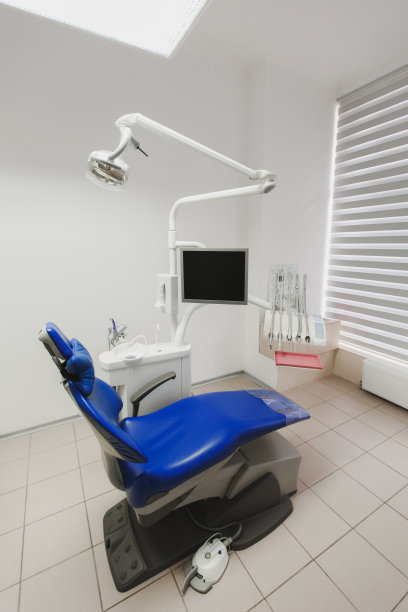Essential Guidelines to Ensure Safety and Effectiveness During Root Canal Treatment for Optimal Patient Care
Summary: Root canal treatment (RCT) is a vital dental procedure aimed at relieving pain and saving teeth affected by infection or decay. This article outlines essential guidelines for ensuring both safety and effectiveness during RCT, emphasizing patient care as the core principle. Key aspects include the importance of meticulous diagnosis and treatment planning, sterile techniques and infection control protocols, the use of advanced equipment and technology, and post-treatment care and follow-up. Following these guidelines not only enhances the likelihood of treatment success but also significantly improves patient experiences, making the process as comfortable and effective as possible.
1. Importance of Diagnosis and Treatment Planning

Effective root canal treatment begins with a comprehensive diagnosis. Dentists must conduct thorough examinations, using both clinical assessments and diagnostic tools such as X-rays. This step helps identify the extent of the tooths damage and the presence of infection. By accurately diagnosing the problem, practitioners can tailor their approach, ensuring the most appropriate treatment is administered.
In addition to diagnosis, treatment planning is equally critical. After identifying the issue, dentists should outline a clear treatment plan that details the steps involved in performing the root canal. This plan should include anticipated challenges, necessary materials, and the timeline for each stage. This level of planning enhances preparedness, allowing practitioners to address potential complications proactively.
Patient communication is also a vital component of this phase. Patients should be informed about their diagnosis, treatment options, and what to expect throughout the process. A well-informed patient is more likely to be compliant, calm, and trusting of the dentist, leading to a more successful outcome.
2. Sterile Techniques and Infection Control Protocols
Ensuring a sterile environment is paramount in root canal treatment to prevent infection. Dental practitioners must adhere to strict aseptic protocols throughout the procedure. This includes using sterilized instruments and maintaining cleanliness in the treatment area. A well-sanitized environment minimizes the risk of introducing harmful bacteria into the tooth.
Infection control goes beyond just sterilization. Dentists should also wear personal protective equipment (PPE), including gloves, masks, and eyewear. This not only protects the dental staff but also shields patients from potential transmission of pathogens. Proper sanitization of the dental operatory and equipment, along with regular training on infection control measures, is crucial for maintaining high standards.
Monitoring patients for any signs of infection during the procedure is essential. Dentists should observe for symptoms such as swelling or unusual bleeding, which may indicate complications. Prompt action in addressing any issues can significantly alter a patients recovery trajectory and reduce discomfort, ensuring a smooth treatment process.
3. Utilizing Advanced Equipment and Technology
The adoption of advanced dental technology is essential to enhance both safety and effectiveness during root canal treatment. Tools such as rotary endodontic systems have been developed to improve the efficiency and precision of cleaning and shaping the root canals. This equipment allows for a more controlled approach, minimizing the risk of instrument separation or damage to the tooth structure.
Imaging techniques, such as digital X-rays and cone beam computed tomography (CBCT), provide enhanced visualization of the tooth and its surrounding structures. These technologies allow for better assessment of the root canal systems complexity, facilitating more effective treatment planning. Understanding the unique anatomy of each tooth leads to better outcomes.
Furthermore, implementing dental lasers in root canal procedures can enhance outcomes significantly. Lasers assist in disinfecting the canal while reducing discomfort and bleeding. The accuracy offered by laser technology contributes to better cleaning while preserving surrounding tissues, promoting a quicker recovery for patients.
4. Post-Treatment Care and Follow-Up
The importance of thorough post-treatment care cannot be overstated. After a successful root canal, patients require clear instructions for care at home. Dentists should provide guidance on pain management, dietary restrictions, and signs of potential complications that should trigger immediate consultations.
Regular follow-up visits are another crucial element of patient care after root canal treatment. These visits allow practitioners to monitor the healing process and address any concerns the patient may have. A well-structured follow-up process fosters trust and satisfaction, reassuring patients that their health is prioritized.
Moreover, educating patients on the significance of oral hygiene and regular dental check-ups will contribute to the longevity of their treated tooth. By emphasizing preventive care and regular assessments, dentists can help patients avoid further issues, ensuring their dental health remains optimal.
Summary:
In summary, adopting essential guidelines for safety and effectiveness during root canal treatment is crucial for optimal patient care. From in-depth diagnosis and careful planning to maintaining sterile environments and employing the latest technologies, each step plays a vital role in achieving successful outcomes. The emphasis on post-treatment care only reinforces the commitment to keeping patients informed and comfortable during their recovery.
This article is compiled by Vickong Dental and the content is for reference only.



